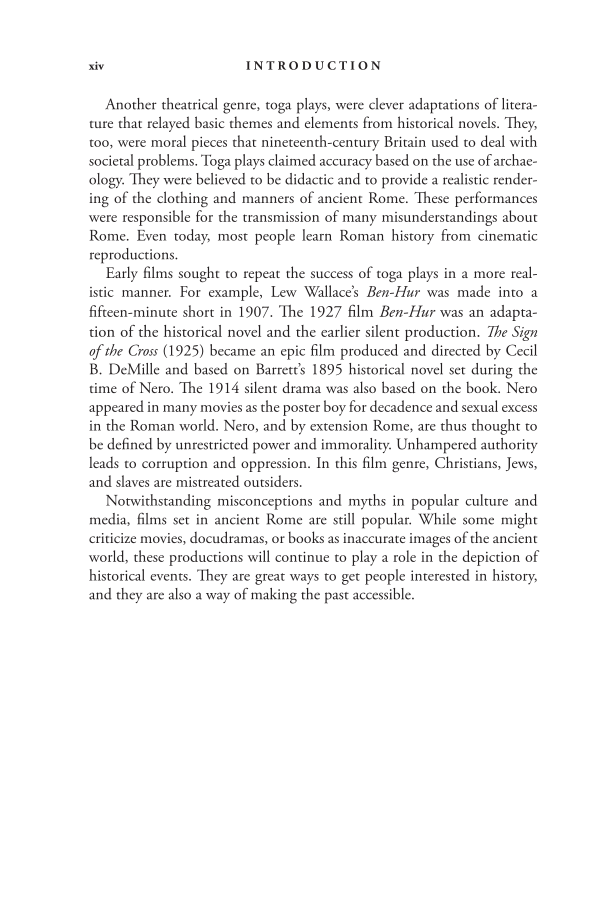xiv I n tr o d u cti o n Another theatrical genre, toga plays, were clever adaptations of litera- ture that relayed basic themes and elements from historical novels. They, too, were moral pieces that nineteenth-century Britain used to deal with societal problems. Toga plays claimed accuracy based on the use of archae- ology. They were believed to be didactic and to provide a realistic render- ing of the clothing and manners of ancient Rome. These performances were responsible for the transmission of many misunderstandings about Rome. Even today, most people learn Roman history from cinematic reproductions. Early films sought to repeat the success of toga plays in a more real- istic manner. For example, Lew Wallace’s Ben-Hur was made into a fifteen-minute short in 1907. The 1927 film Ben-Hur was an adapta- tion of the historical novel and the earlier silent production. The Sign of the Cross (1925) became an epic film produced and directed by Cecil B. DeMille and based on Barrett’s 1895 historical novel set during the time of Nero. The 1914 silent drama was also based on the book. Nero appeared in many movies as the poster boy for decadence and sexual excess in the Roman world. Nero, and by extension Rome, are thus thought to be defined by unrestricted power and immorality. Unhampered authority leads to corruption and oppression. In this film genre, Christians, Jews, and slaves are mistreated outsiders. Notwithstanding misconceptions and myths in popular culture and media, films set in ancient Rome are still popular. While some might criticize movies, docudramas, or books as inaccurate images of the ancient world, these productions will continue to play a role in the depiction of historical events. They are great ways to get people interested in history, and they are also a way of making the past accessible.
Document Details My Account Print multiple pages
Print
You have printed 0 times in the last 24 hours.
Your print count will reset on at .
You may print 0 more time(s) before then.
You may print a maximum of 0 pages at a time.
































































































































































































































































